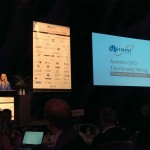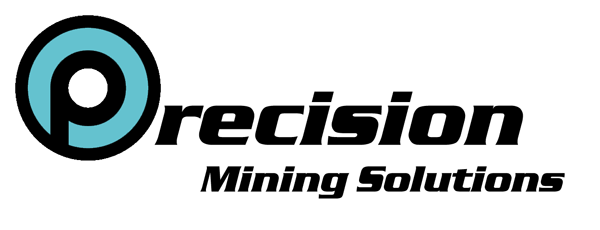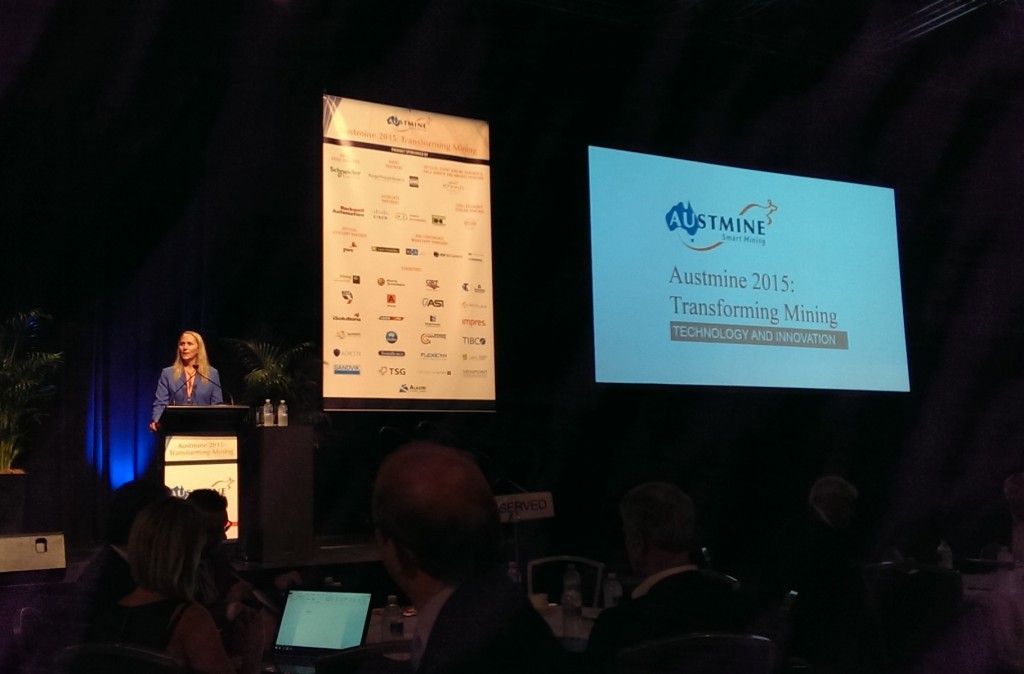Austmine 2015: Transforming Mining – Highlights and Review

Last week I attended the Austmine 2015: Transforming Mining conference and workshop. I went with a focus on learning as much as I could and making as many new contacts as possible as part of my current business development drive. And with Brisbane one of my old stomping grounds and the mining industry being the way that it is, I would also be catching some old contacts as well.
Pre-Conference Workshop: Sales and Marketing Excellence in Mining
Part of my business development campaign includes learning the ropes in sales and marketing so I signed up for the pre-conference workshop – Sales and Marketing Excellence in Mining. Now, I’m sure sales and marketing in the mining industry is not that different to other industries but the context was provided by the group in the room. There was quite a range of backgrounds and businesses in the room of 15 or so with a common goal of learning how to better engage with our potential clients. I found the presentations by both Michael Lang, the MD of SG Partners, (on sales) and Megan Edwards, the Membership and Communications Manager of Austmine, (on content marketing) practical and informative. Group discussions and questions flowed and I, for one, made real progress in my understanding of sales and marketing methods. The best parts for me were in addressing the questions of what business am I in, am I really in, and what should I be in and also in what great questions can I ask my clients. Addressing these points equipped me well for the rest of the conference by helping me to succinctly define my business and my offering – something I spoke a lot about over the course of the conference.
I had a chance to immediately put my new found skills and knowledge to work at the first networking function straight after the workshop. I definitely had a better conference because of this workshop – I was already motivated and it enabled and emboldened me and I was able to have some great conversations with people.
The Conference
The byline of the conference was “Technology and Innovation” and it was most definitely front and centre. However, there was one main underlying, but pervasive, theme and that was “Collaboration”. It was the way in which Technology and Innovation was discussed and achieved – collaboration is necessary to get these things done. Without it your solution would suffer either through lack of speed, low quality, or high cost.
There were over 50 presentations over the 2 days and I’ll go through some of the highlights
Day 1
Following the opening by Christine Gibbs Stewart, the CEO of Austmine, in which we learnt that our METS sector is worth $90B we had the first keynote presentation from Br the MCA followed by Phil Edmands from Rio Tinto Australia. Phil spoke of the need to leverage every comparative competitive advantage we have in the METS sector – Africa is rising and we should collaborate with them (meaning this is perfect timing for the inaugural AusIMM Africa Australia Technical Mining conference coming up in a couple of weeks). He also made the point that it’s very difficult for METS companies (which are predominantly SMEs) to crack into the supply chain of mining companies to which I can agree. He then lead into his idea for an innovation hub, which I really hope gets off the ground because I’d love to be a part of it.
Alan Broome, the Chairman Emeritus of Austmine, then told us that “now is the new normal” and “productivity is the new metric” and Elizabeth Lewis-Gray, the Chair of Austmine, reiterated Phil’s point about METS companies’ difficulties with mining supply chains and raised the issue of IP and how the question of who owns it always slows innovation down.
Afterwards came what was, for me, one of the most impactful presentations of the conference. James Balzary from Schneider Electric spoke about Tomorrow’s Mine – he’s certain it’s here today and he outlined the current trends. The part that stuck with me and that I brought up in many conversations that followed was how “KPIs are misaligned across the value chain” in that silos battle each other and won’t ‘take a hit’ on their KPI in favour of the KPI in another silo. I’ve seen this everywhere I go – in every company and every mine – and it’s something I’m working on changing.
The award for the best author name went to the presenter of the hybrid airships solution, Grant Cool (PhD), also know as Dr. Cool. Awards and frivolity aside, Dr. Cool’s presentation on hybrid airships was one of the more revelatory ones at the conference. I can see the mining industry having a lot of trouble accepting the technology, as sensible or effective and efficient as it may be.
Richard Mathews, the CEO of RungePincockMinarco, made a very slick presentation on their new mine planning tool utilising gaming technology. I have to say that this dynamic tool will change the way we do mine planning and scheduling and I can’t wait to see it in the field. Andrew Scott, the Senior Director Mining Information Technology and Automation from Barrick, made a very good point in his presentation when he said that the biggest inhibitor to innovation is culture.
Matthew Brown, the Senior Surveyor from Wilpinjong Coal Mine, gave one of my favourite presentations of the conference. He spoke about the implementation of UAS (Unmanned Aerial Survey) at Wilpinjong, which was originally mainly for managing their stockpiles. They extended the use of their drone to monitoring bulk dozer push and some other areas but the part that I liked the most was the safety-related application of monitoring hot ground from the air with an infra red camera. All of these extended applications brought the payback period of their drone technology from 12 to 3 months. A step change in their abilities at site and a great demonstration of innovating to extend existing technology to further uses.
Later, Dan Alexander, the Head of Open Forums from AngloAmerican, presented their FutureSmart Open Forums. Focussing on the entire value chain they’ll use technology and innovation as an enabler to deliver value. They’ll have a novel approach to IP to facilitate collaboration but the part that stuck in my mind was his comment that we need to change the way we ask questions to get to the bottom of the problem to be able to innovate properly. The FutureSmart Open Forums are definitely something I’ve love to get involved in.
The conference dinner highlight was the keynote presentation by Jeyakumar Janakaraj (JJ), the CEO of Adani. The Adani leases in QLD are larger than Singapore and they only had to deal with one landowner. I’m still reeling after the point that in a lease of the same area in India they would have to deal with more than 500,000 landowners. And we think it can be hard here in Australia!
One of the most interesting discussions I had was over a beer with a Manager – Mining Processes from South Africa after the dinner. We were discussing the relative states of the Australian and South African mining industries and he made the point that in South Africa they don’t have to fight for the relevance of their industry – their workers and companies are revered and respected in public and recognised as necessary to their economy through jobs and contribution to the improvement of the quality of life. While here in Australia we have a vocal few who fight to diminish or destroy the mining industry and a larger portion who question our relevance and see us as only a negative. I think that has a direct effect on the kind of innovation we can attract to the mining industry. What if some of the most brilliant minds just don’t like us (for whatever reason, real or perceived, justified or not) and choose a different industry? We lose because we’re less attractive. Paul Lucey from Gold Fields Australia (who presented on Day 2) has already experienced something like this in a very real and immediate way. The people he had working on his technology got taken up and over by new technology development completely outside the mining industry when Uber came calling.
Day 2
The crowd was a bit more split up on day 2 with discussions continuing in the exhibition space and rooms for separate streams again.
Some of the highlights from day 2 included Chris Stevens’, the Director and Mining Consulting Leader from PwC, comment that technology needs to be a part of a deep strategic vision. All too often I’ve seen sites barely skimming the surface of the potential of the technology they have available to them and failing to integrate it properly with the rest of their processes. No one seems to be driving the strategic vision even if their was one.
Matt Oostveen, the CTO of VCE, recommended that we go for quick wins on implementing rather than the long 12-18 months projects. He also pointed out that we should be looking to best practice outside the mining industry and we must communicate what can and cannot be done with the technology (the age old issue of managing expectations).
Dr Joe Cronin, the LHD Automation Project Manager from Northparkes Mine, ranked Safety at the top of his Drive for Innovation list and Paul Fenner, the Senior Manager Technical Sales, told us that we have to be excellent more often. Yong The, the Global Strategic Alliance Manager for Schneider Electric indicated in the panel discussion that METS companies need to collaborate, ALL vendors need to collaborate, and that customers need to facilitate this collaboration (which, on first flush, appears to be what AngloAmerican are doing with their FutureSmart Open Forums). He made another point that SME METS companies exist because they have a speciality that the larger METS companies just could not support and that this makes them critical in the industry. Filling gaps as a specialist is a very significant part of my business model and it felt like Yong was talking right at me – I made sure to catch him afterwards and we had a great conversation.
Greg Hall, the MD and CEO of Hillgrove Resources, gave a presentation on what I think was best practice conversion from contract miner to owner/operator. He also outlined the criticality of good ramp design, construction, and maintenance in reducing fuel burn, spillage, and transmission stress due to excessive gear changes. Dr Laurie Hammond, the Chairperson of CRC Mining, made the points that innovation is “ideas applied successfully” and that it may or may not involve technology and it often involved people and processes. I would only argue the latter point by saying it always involves people and processes in one way or another. All too often the focus of an innovation is on the technology itself not the people involved and this is often a significant contributing factor to the failure of the implementation.
Joe Pease, the CEEC Chair and CEO of CRC ORE, gave another of my most favourite presentations of the conference. I took a stack of notes and some of the highlights include: comminution consuming 3% of the WORLD’S energy (!!) meaning that (for sites that have significant crushing requirements) improvements in the upstream mining processes should focus on optimising comminution rather than just reducing costs in their specific silo; comminution starts at drilling and blasting; the IES (Integrated Extraction Simulator) is something I want to know much more about; “silos are constructed out of our own measurement KPIs”; and we must “integrate production from drill core to metal”.
The last presentation of the conference was given by Dr Fred Hess, the CEO and MD of PanAust. He made a great presentation about implementing operation excellence at a greenfield project right from the start and a testament to that was the large audience left to watch it at the very end of a packed the conference.
Christine Gibbs Stewart returned to the stage to make some closing comments before we broke for the final time and farewell drinks.
Conclusion
I found the presentations were both inspired and inspiring. They were all high quality and, while not every topic could be covered, there was something for everyone. The organisation was great and the exhibition was well set up. The Austmine staff were visible and available and the venue (the Royal International Convention Centre, Brisbane) staff were all courteous and attentive. The seating was comfortable, the temperature control very good, and very importantly, the food was also very good and plentiful indeed.
While collaboration was a pervasive theme something else that was highlighted several times in presentations and discussions was the speed (or rather, lack of speed) of take up of new solutions by the mining industry. Some showed that mining takes up to 15 years to adopt technology while other showed a rapid take up was down to 5 years. Some of the solutions presented at the conference and exhibition are nothing short of brilliant and if it takes 5 to 15 years for the mining industry to accept and adopt them we’ll be a long way behind other industries and be less attractive to investment because of it.
I’ve taken a lot away from this conference and the many interactions I’ve had with the authors, delegates, and exhibitors alike. I look forward to continuing to work in an industry that has this kind of people in it. And, all being well, I’ll be along to the next one. Maybe, by that time, I’ll even have something worthy of presenting alongside such august company.
Share This:





0 Comments